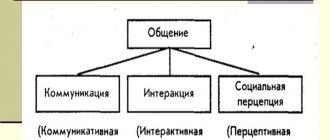An example of congruence.
The two triangles on the left are equal, and the third is similar. The last triangle does not match or resemble any of the others. Congruence allows some properties to change, such as location and orientation, but leaves others unchanged, such as distances and angles. Unchanged properties are called invariants. In geometry, two figures or objects are congruent,
if they are the same shape and size, or if one is the same shape and size as the mirror image of the other. [1]
More formally, two sets of points are said to be congruent,
if and only if one can be transformed into the other using isometry, i.e. a combination of rigid movements, namely translation, rotation and reflection. This means that any object can be moved and flipped (but not resized) so that it matches another object exactly. Thus, two separate flat figures on a piece of paper are congruent if we can cut them out and then match them completely. Flipping the paper is allowed.
This diagram illustrates the geometric principle of angle-angle-side triangle congruence: given triangle ABC and triangle A'B'C 'triangle ABC is congruent to triangle A'B'C' if and only if: angle CAB is congruent to angle C'A' B', and angle ABC is congruent to angle A'B'C', and BC is congruent to B'C'.
In elementary geometry the word congruent
often used as follows.
[2] The word equal
is often used instead of
congruent
for these objects.
- Two segments coincide if they have the same length.
- Two angles are congruent if they have the same magnitude.
- Two circles coincide if they have the same diameter.
In this sense, the congruence of two plane figures
implies that their respective characteristics are "coincident" or "equal", including not only their corresponding sides and angles, but also their corresponding diagonals, perimeters and areas.
The related concept of similarity applies when objects have the same shape but are not necessarily the same size. (Most definitions view congruence as a form of similarity, although a minority require that objects have different sizes to be considered similar.)
Determining Congruence of Polygons
The orange and green quadrilaterals are equal;
blue doesn't match them. All three have the same perimeter and area. (The order of the blue quad's sides is "mixed", resulting in two interior angles and one diagonal not being the same.) For two polygons to be congruent, they must have an equal number of sides (and therefore an equal number - the same number - of vertices). Two polygons with n
sides are congruent if and only if they each have numerically identical sequences (even if clockwise for one polygon and counterclockwise for the other) side-angle-side-angle -... for
n
sides and
n
angles.
The congruence of polygons can be established graphically as follows:
- First, match and label the corresponding vertices of the two shapes.
- Second, draw a vector from one of the vertices of one of the shapes to the corresponding vertex of the other shape. Translate
the first figure along this vector so that these two vertices coincide. - Third, rotate
the translated shape around the matching vertex until one pair of matching sides match. - Fourth, mirror
the rotated shape around that matching side until the shapes match.
If at any point a step cannot be completed, the polygons do not match.
see also
- Homothety
- Similarity
- Cauchy's theorem on polyhedra is a test for the congruence of convex polyhedra.
| : Incorrect or missing image | This article lacks links to sources of information. Information must be verifiable, otherwise it may be questioned and deleted. You may edit this article to include links to authoritative sources. This mark is set July 20, 2016 . |
K:Wikipedia:Articles without sources (type: not specified)
Triangle congruence
See also: Solving triangles
Two triangles are congruent if their corresponding sides are equal in length and their corresponding angles are equal in measure.
If triangle ABC is congruent to triangle DEF, mathematically this relationship can be written as:
△ A BC ≅ △ DEF . {\displaystyle \triangle \mathrm {ABC} \cong \triangle \mathrm {DEF}.}
In many cases, it is sufficient to establish the equality of the three corresponding parts and use one of the following results to deduce the congruence of the two triangles.
The shape of a triangle is determined to within congruence by specifying two sides and the angle between them (SAS), two angles and the side between them (ASA), or two angles and the corresponding adjacent side (AAS). However, specifying two sides and an adjacent angle (SSA) can produce two different possible triangles.
Definition of congruence
Sufficient evidence of the correspondence between two triangles in Euclidean space can be provided by the following comparisons:
- SAS
(Side-Angle-Side): If two pairs of sides of two triangles are equal in length and the included angles are equal when measured, then the triangles are congruent. - SSS
(Side-Side-Side): If three pairs of sides of two triangles are equal in length, then the triangles are congruent. - ASA
(Angle-Side-Angle): If two pairs of angles of two triangles are equal in size, and the included sides are equal in length, then the triangles are congruent.
The ASA postulate was introduced by Thales of Miletus (Greek). In most axiom systems, the three criteria—SAS, SSS, and ASA—are stated as theorems. At school mathematics Study Group of the SAS
accepted as one (#15) of 22 postulates.
- AAS
(Angle-Angle-Side): If two pairs of angles of two triangles are equal in dimension, and a pair of corresponding non-included sides are equal in length, then the triangles are congruent.
AAS is equivalent to the ASA condition in the fact that if any two angles are given, then so is the third angle, since their sum must be 180°. ASA and AAS are sometimes combined into one condition, AAcorrS
- any two angles and the corresponding side. [3] - RHS
(Rectangular Hypotenuse Side), also known as
HL
(Hypotenuse Side): If two right triangles have hypotenuses equal in length and a pair of shorter sides equal in length, then the triangles are congruent. .
Side angle
The SSA (side-side-angle) condition, which specifies two sides and an unincluded angle (also known as ASS, or angle-side-side), does not by itself prove a match. To demonstrate compliance, additional information is required, such as measuring the corresponding angles and, in some cases, the lengths of two pairs of corresponding sides. There are several possible cases:
If two triangles satisfy the SSA condition, and the length of the side opposite the angle is greater than or equal to the length of the adjacent side (SSA, or long side-short side angle), then the two triangles are congruent. The opposite side is sometimes longer if the corresponding angles are acute, but always
longer if the corresponding angles are right or obtuse. If the angle is a right angle, also known as the hypotenuse postulate (HL) or the right angle hypotenuse side condition (RHS), the third side can be calculated using the Pythagorean theorem, allowing the SSS postulate to be calculated. applied.
If two triangles satisfy the SSA condition, and the corresponding angles are acute, and the length of the side opposite the angle is equal to the length of the adjacent side multiplied by the sine of the angle, then the two triangles are congruent.
If two triangles satisfy the SSA condition and the corresponding angles are acute and the length of the side opposite the angle is greater than the length of the adjacent side times the sine of the angle (but less than the length of the adjacent side), then the two triangles cannot be shown to be congruent. This is an ambiguous case, and two different triangles can be formed from the given information, but additional information to differentiate them can lead to a proof of correspondence.
Angle-angle-angle
In Euclidean geometry, AAA (angle-angle-angle) (or simply AA, since in Euclidean geometry the angles of a triangle add up to 180°) provides no information about the size of two triangles and therefore only proves similarity, not congruence, in Euclidean space.
However, in spherical geometry and hyperbolic geometry (where the sum of the triangle's angles depends on size), AAA is sufficient for comparison at a given surface curvature. [4]
CPCTC
This acronym stands for Corresponding parts of congruent triangles are congruent.
is a shortened version of the definition of congruent triangles. [5] [6]
In more detail, this is a short way of saying that if triangles ABC and DEF are congruent, that is
△ A BC ≅ △ DEF , {\displaystyle \triangle ABC\cong \triangle DEF,}
with corresponding pairs of angles at vertices A and D; B and E; and C and F, and with corresponding pairs of sides AB and DE; BC and EF; and CA and FD, then the following statements are true:
A B ¯ ≅ DE ¯ {\displaystyle {\overline {AB))\cong {\overline {DE))} BC ¯ ≅ EF ¯ {\displaystyle {\overline {BC))\cong {\overline {EF)) } A C ¯ ≅ DF ¯ {\displaystyle {\overline {AC))\cong {\overline {DF))}∠ B A C ≅ ∠ EDF {\displaystyle \angle BAC\cong \angle EDF} ∠ A BC ≅ ∠ DEF {\displaystyle \angle ABC \cong \angle DEF} ∠ BC A ≅ ∠ EFD. {\displaystyle \angle BCA\cong \angle EFD.}
This statement is often used as a justification in proofs of elementary geometry when the congruence of the parts of two triangles is required after the congruence of the triangles has been established. For example, if two triangles were shown to be congruent by SSS criteria,
and the statement that the corresponding angles are the same is necessary in the proof, then the CPCTC can be used as support for this statement.
Related theorem - CPCFC
, in which "triangles" are replaced by "figures", so that the theorem applies to any pair of polygons or polyhedra that are congruent.
Definition of congruence in analytical geometry
In the Euclidean system, congruence is fundamental; this is the analogue of equality for numbers. In analytical geometry, congruence can be defined intuitively as follows: two mappings of figures into the same Cartesian coordinate system are congruent if and only if, for any
two points in the first mapping, the Euclidean distance between them is equal to the Euclidean distance between the corresponding points in the second mapping.
And states a more formal definition that two subsets of A
and
B
from the Euclidean space
Rn
said
to be congruent if there is an isometry
n
:
Rn
→
Rn ( the Euclidean group
E
(
n
)) with
F
(
A
)
= B. Congruence is a relation of equivalence.
CONTENT
- 1 Definition of congruence of polygons
- 2 Congruence of triangles 2.1 Definition of congruence 2.1.1 Side-side-angle
- 2.1.2 Angle-angle-angle
Congruent conic sections
Two conic sections are congruent if their eccentricity and one other individual parameter characterizing them are equal. Their eccentricity determines their shapes, the equality of which is sufficient to establish similarity, and the second parameter then establishes the size. Since two circles, parabolas or rectangular hyperbolas always have the same eccentricity (specifically 0 in the case of circles, 1 in the case of parabolas and in the case of rectangular hyperbolas), two circles, parabolas or rectangular hyperbolas must have only one other common parameter value defining them size so that they are congruent. 2 {\displaystyle {\sqrt {2))}
Bottom line
Congruence, according to many psychologists, allows a person to be a healthy person. She experiences calmness and self-confidence, has adequate self-esteem, does not evaluate others and does not force them to fight with themselves. A person lives harmoniously, achieving happiness and success in the end.
If a person is incongruent, he is constantly in conflict with himself and other people. He is nervous, unsure of himself, and has either high or low self-esteem. Neuroses, depression, apathy, inappropriate behavior, etc. often arise here. Incongruity deprives a person of happiness, peace, stability and satisfaction.
Congruent triangles on a sphere
Main articles: Solving triangles § Solving spherical triangles, and Spherical trigonometry § Solving triangles
As with planar triangles, on a sphere two triangles sharing the same angle-side-angle (ASA) sequence are necessarily congruent (that is, they have three equal sides and three equal angles). [9] This can be seen as follows: one can place one of the vertices with a given angle at the south pole and draw the side with a given length up the prime meridian. Knowing both angles at both ends of a segment of a fixed length ensures that the other two sides start with a uniquely defined path and thus meet each other at a uniquely defined point; thus the ASA is valid.
The side-angle-side (SAS) and side-side-side (SSS) comparison theorems also hold for a sphere; also, if two spherical triangles have the same angle-angle-angle (AAA) sequence, they are congruent (unlike planar triangles). [9]
The plane-triangle, angle-angle-side (AAS) comparison theorem does not hold for spherical triangles. [10] As in planar geometry, side-to-side angle (SSA) does not imply congruence.
Proportional segments
Practical work. Proportional segments.
1. Draw 3 parallel lines in your notebook.
2. Draw 3 secants that intersect these lines.
3. Measure the segments AB, BC, AC, DE, EF, DF, GH, HI and GI.
4. Write and calculate the following ratios
5. Based on the results, can we say that parallel lines divide secants into proportional segments? Proportional segments
If for segments AB, CD, , C1D1 is satisfied, then segments AB and CD are proportional to segments
Theorem. Parallel lines intersecting the sides of an angle cut off proportional segments from them.
Proof. Let us assume that parallel lines intersect the sides of angle A at points B and C, . For simplicity, let us assume that there is a segment of length such that it fits an integer number of times both in the segment AC and in the segment . Let us divide the segment AC into equal segments of length the number of times. In this case, one of the division points will be the point. Through the division points we draw straight lines parallel to BC. According to Thales' theorem, these lines will divide the segment AB into equal segments of a certain length. We get that From here Thus,
Similar quadrilaterals, similar triangles
Similar are figures that are identical in shape and whose corresponding dimensions are proportional. For example, all squares are similar to each other, as are circles of different radii.
Polygons in which the corresponding angles are congruent and the corresponding sides are proportional segments are called similar. For example, in the figure, the quadrilaterals ABCD and EFGH are similar quadrilaterals. Because,
For similar triangles, the corresponding angles are congruent, and the corresponding sides are proportional segments. Here, when we talk about corresponding sides, we mean the sides that are opposite the congruent angles. In the figure for we have:
Since , then are similar triangles. Similarity is indicated by the sign. The ratio of the corresponding sides is called the similarity coefficient and is indicated by the letter. The similarity coefficient of the triangles in the figure is 3.
Recommendations
- Clapham, C.; Nicholson, J. (2009). "Oxford Concise Dictionary of Mathematics, Congruent Numbers" (PDF). Addison-Wesley. item 167. Archived October 29, 2013. Retrieved June 2, 2017 .CS1 maint: bot: original URL status unknown (link)
- "Congruence". Open reference book for mathematics. 2009. Retrieved June 2, 2022.
- Parr, H. E. (1970). Repeated course in school mathematics
. Mathematics textbooks second edition. ISBN of G Bell and Sons Ltd. 0-7135-1717-4. - Cornel, Antonio (2002). Geometry for High School
. Mathematics textbooks second edition. Bookmark Inc. ISBN 971-569-441-1. - Jump up
↑ Jacobs, Harold R. (1974),
Geometry
, W. H. Freeman, p. 160, ISBN 0-7167-0456-0 Jacobs uses a slight variation of the phrase - "Congruent Triangles". Cliff's Notes. Retrieved February 4, 2014.
- Borisov, Alexander; Dickinson, Mark; Hastings, Stuart (March 2010). "The congruence problem for polytopes". American Mathematical Monthly
.
117
: 232–249. arXiv:0811.4197. DOI: 10.4169/000298910X480081. - Creech, Alexa. "The Congruence Problem" (PDF). Archived from the original (PDF) on November 11, 2013.
- ^ ab Bolin, Michael (9 September 2003). "A Study in Spherical Geometry" (PDF). pp. 6–7.
- Hollyer, L. "Slide 89 of 112".










